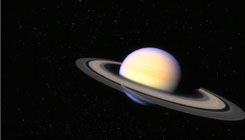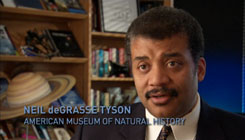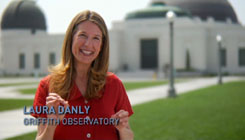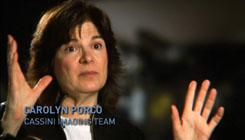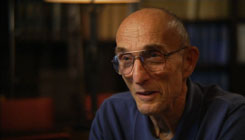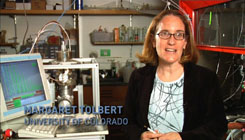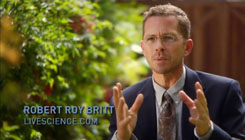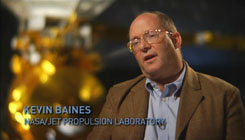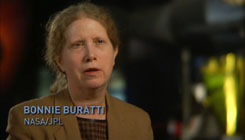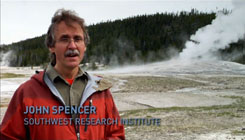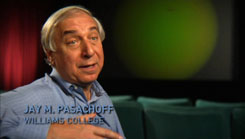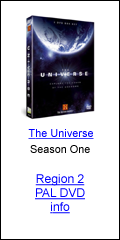Here, a solid and definitive episode is devoted to the planet Saturn.
Its common features are introduced, and many details unique to this particular
documentary are presented.
The planet itself as a gas giant is discussed first - and in comparing its mass
and density with Jupiter, Saturn really is a much more lightweight puff-ball.
The many, many layers of thick atmosphere lead to very complex weather patterns,
and the episode goes on to detail the planet's active southern storm alley,
its proper south polar cyclone, and the bizarre hexagonal feature on its north pole
that has been observed for twenty years so far.
The episode then celebrates Saturn's rings, including their composition and other
properties. Many unanswered questions and unproven theories about the ring's creation
lead to the question of how recently they formed, and how permanent they are.
Will Saturn eventually lose its rings, and if so, how and when? This episode
indulges in fascinating educated speculations.
Neil deGrasse Tyson:
"What's interesting now that we're going to these planets
is that we're learning that, in some ways,
the moons are where the action is."
Arguably the episode is even more interesting when the focus shifts to Saturn's moons.
The largest moon Titan is up first, and the episode does a solid job of covering
the basics about its hydrocarbon-rich atmosphere and composition. Discoveries made
by Cassini's Huygens probe as it descended to the surface of Titan on January 14, 2005,
are presented excellently here.... "Would it find a liquid or solid surface?" scientists
wondered. The answer - something with a consistency like pudding!
Up next is the series' favourite moon of all time: Enceladus, and we get the
definitive telling of how its ice geysers were first discovered. Excellent.
The last half-segment is an excellent bit that possibly should have come near
the beginning of the episode - a celebration of the Cassini mission to send an
automated probe to Saturn in 2005, which has steadily provided us with a wealth of
new data about the planet and its rings and moons ever since. Members of the
Cassini team such as Carolyn Porco and Andrew Ingersoll have extensive interviews
in this episode, giving us as first-hand a window into this information as we are
likely to get, elevating this episode above many other future ones on this subject.
This episode is definitely a highlight of the first season, and a great episode
for "The Universe" as a whole.
Chapter List:
- Introduction
- The Gas Giant
- The Mysterious Rings
- Exploring Titan
- Geysers on Enceladus
- Search for Life
For further fun:
The exploitation of Titan's hydro-carbon riches for fuel
can be seen in the moon's depiction in the fictional TV serial
"The Invisible Enemy".
|
Participants include:
|

